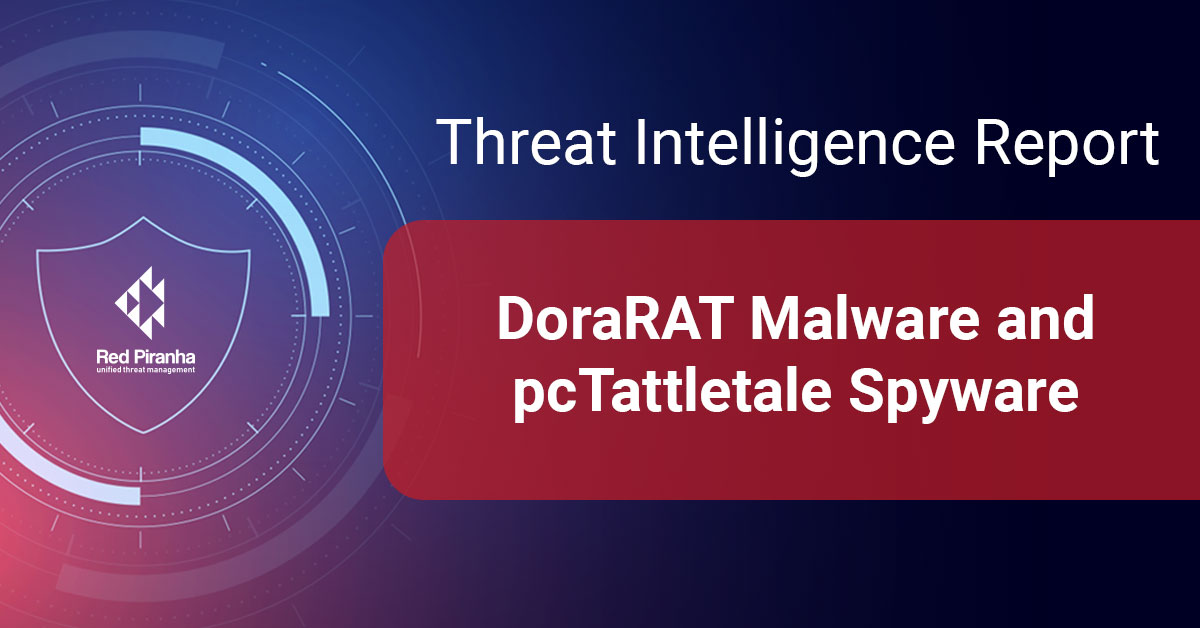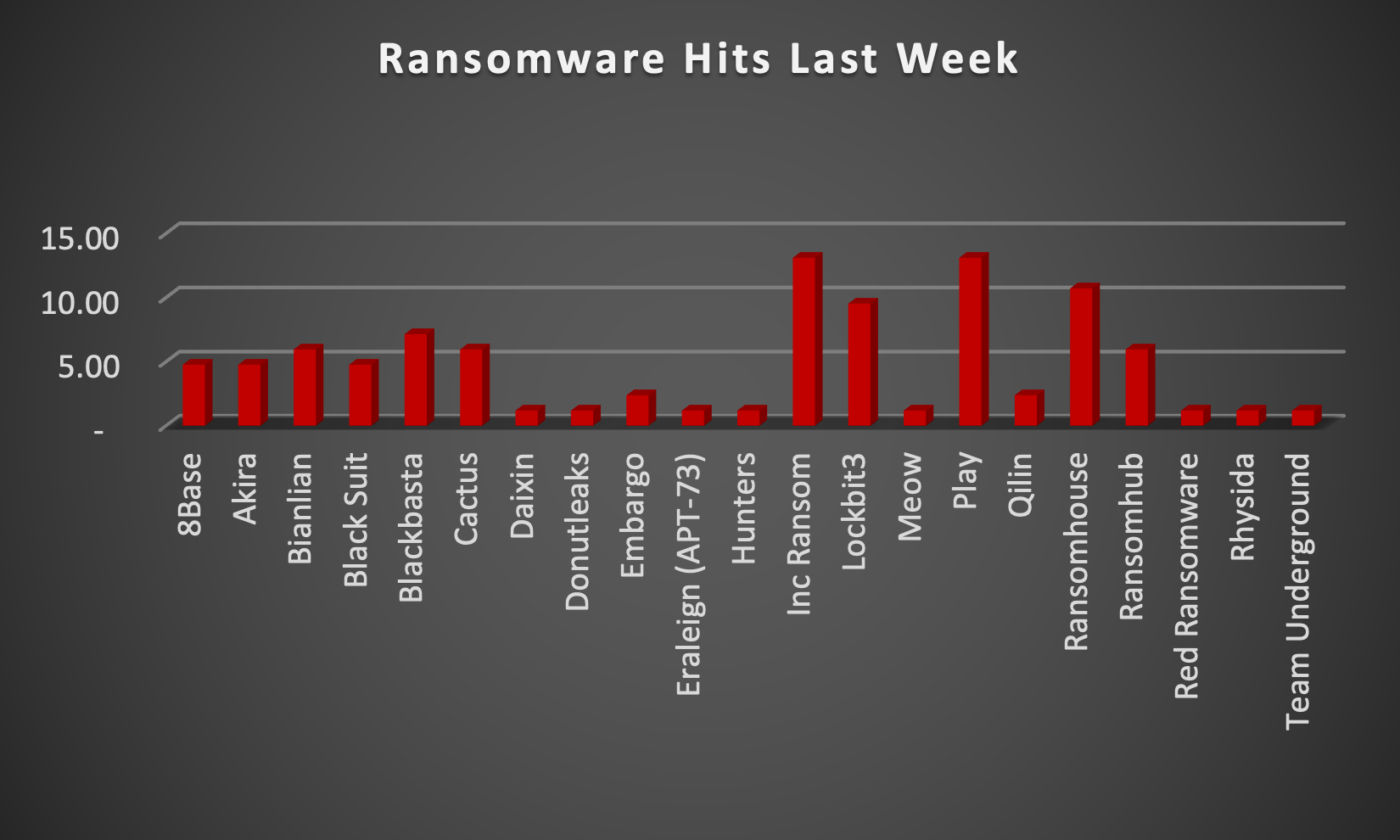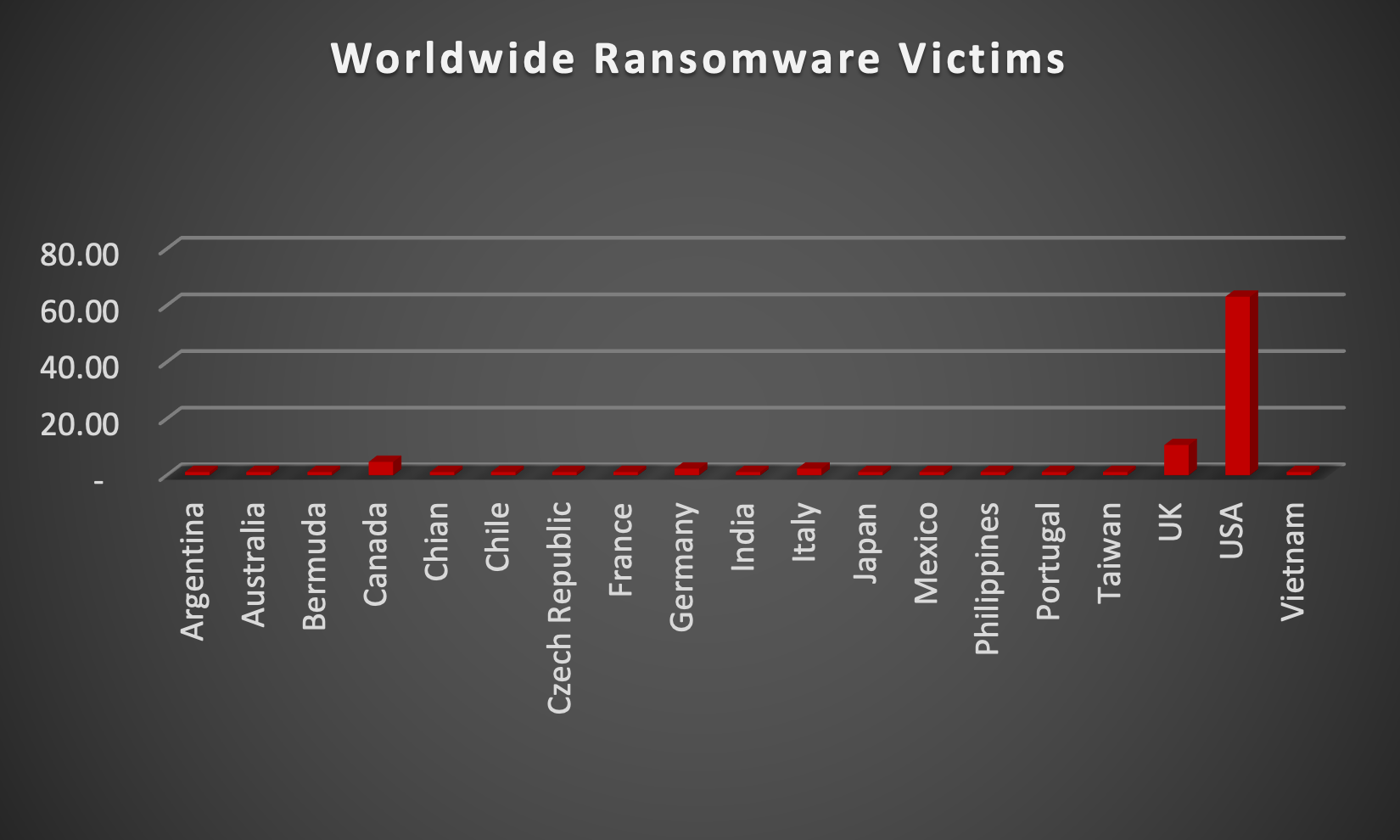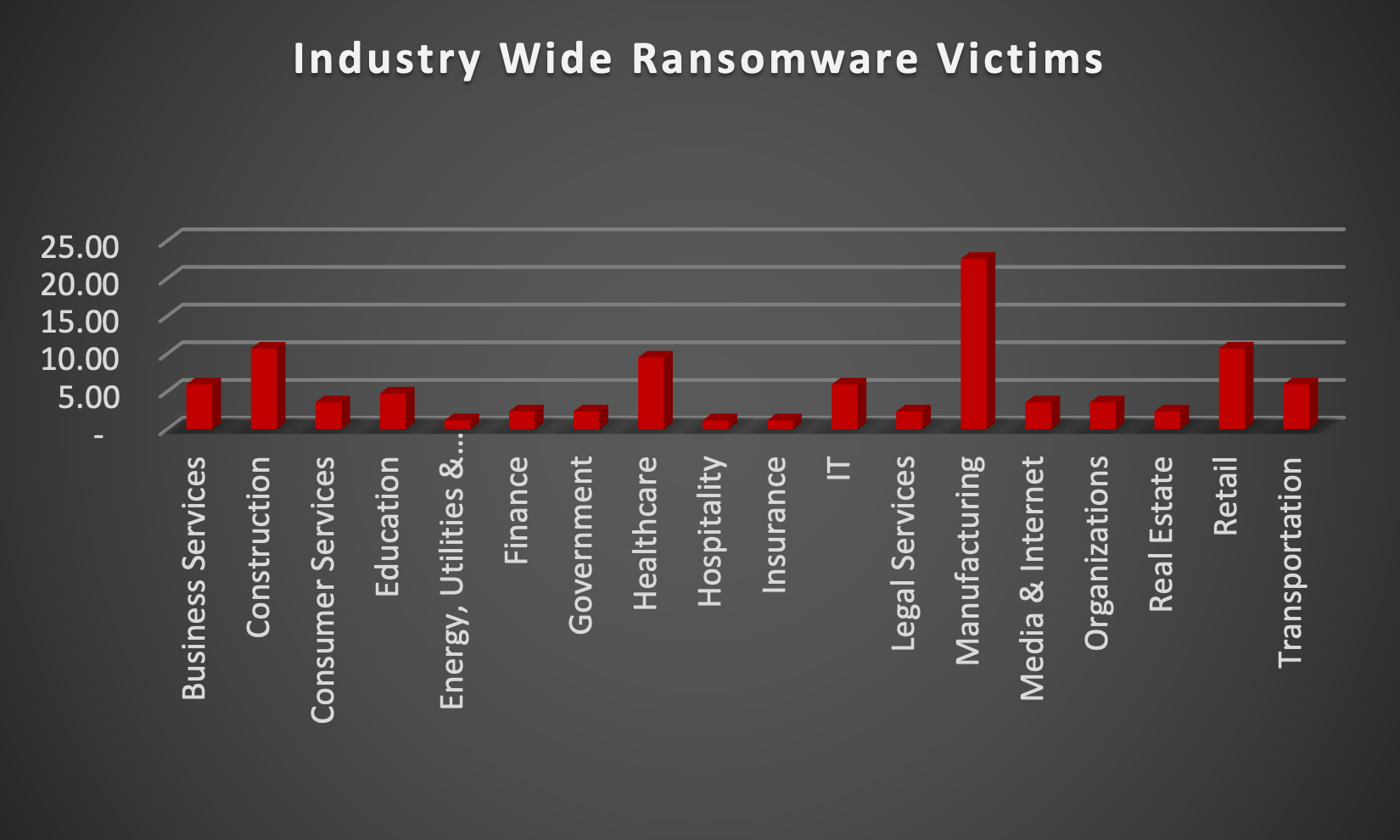
| New Threat Detection Added | 2 (DoraRAT Malware and pcTattletale Spyware) |
| New Threat Protections | 161 |
Weekly Detected Threats
The following threats were added to Crystal Eye XDR this week:
Threat name: | DoraRAT Malware | ||||||||||||||||||
DoraRAT is a Remote Access Trojan (RAT) used by the Andariel threat group to target organisations like manufacturers, educational institutions, and construction companies. DoraRAT grants remote access to attackers, allowing them to steal information, control systems, and potentially escalate privileges within the network. It utilises tactics like phishing campaigns to gain initial access and often works alongside other tools like keyloggers and information stealers for comprehensive data theft. Identified in 2024, DoraRAT highlights the evolving methods of cybercriminals. | |||||||||||||||||||
Threat Protected: | 04 | ||||||||||||||||||
Rule Set Type: |
| ||||||||||||||||||
Class Type: | Trojan-activity | ||||||||||||||||||
Kill Chain: |
| ||||||||||||||||||
Threat name: | pcTattletale Spyware | ||||||||||||||||||
pcTattletale is a commercially available spyware program marketed as a parental control or employee monitoring tool. Despite its legitimacy claims, it raises significant privacy concerns. This consumer-grade spyware operates on Windows and Android devices, capturing screenshots, potentially every few seconds, to monitor a target's activity. A critical security flaw exposed these screenshots on pcTattletale's servers, making them accessible to anyone on the internet, not just the authorised user. This incident, where the spyware was found on hotel check-in systems, compromising guest data, highlights the potential dangers of such software in the wrong hands. While pcTattletale may seem convenient for monitoring purposes, its security risks and ethical implications make it a questionable choice for legitimate use. | |||||||||||||||||||
Threat Protected: | 03 | ||||||||||||||||||
Rule Set Type: |
| ||||||||||||||||||
Class Type: | Trojan-activity | ||||||||||||||||||
Kill Chain: |
| ||||||||||||||||||
Known exploited vulnerabilities (Week 4 - May 2024)
Threat | CVSS | Description | |
CVE-2024-4947 | 8.8 (High) | Google Chromium V8 Type Confusion Vulnerability | |
CVE-2023-43208 | 9.8 (Critical) | NextGen Healthcare Mirth Connect Deserialization of Untrusted Data Vulnerability | |
CVE-2020-17519 | 7.5 (High) | Apache Flink Improper Access Control Vulnerability |
Updated Malware Signatures (Week 4 - May 2024)
Threat | Description | |
Nanocore | The Nanocore trojan, built on the .NET framework, has been the subject of multiple source code leaks, resulting in its widespread accessibility. Similar to other remote access trojans (RATs), Nanocore empowers malicious actors with complete system control, enabling activities such as video and audio recording, password theft, file downloads, and keystroke logging. | |
Remcos | Remcos functions as a remote access trojan (RAT), granting unauthorised individuals the ability to issue commands on the compromised host, record keystrokes, engage with the host's webcam, and take snapshots. Typically, this malicious software is distributed through Microsoft Office documents containing macros, which are often attached to malicious emails. | |
QuasarRat | A remote access trojan that was made available to the public as an open-source project. Once installed on a victim’s machine, it is capable of keylogging, data and screen capturing among other things. It is also known to be highly customisable depending on the threat actor’s intended need. | |
Glupteba | A malware dropper that is designed to download additional malware on an infected machine. |
| Ransomware Report | |
The Red Piranha Team actively collects information on organisations globally affected by ransomware attacks from various sources, including the Dark Web. In the past week alone, our team uncovered new ransomware victims and updates on previous victims across 18 different industries spanning 19 countries. This underscores the widespread and indiscriminate impact of ransomware attacks, emphasising their potential to affect organisations of varying sizes and sectors worldwide. Play and INC Ransom ransomware groups stand out as the most prolific, having updated a significant number of victims (13%) each distributed across multiple countries. In comparison, Ransomhouse ransomware updated 10% of victims, in the past week. The following list provides the victim counts in percentages for these ransomware groups and a selection of others. | |
| Name of Ransomware Group | Percentage of new Victims last week |
8Base | 4.76% |
Akira | 4.76% |
Bianlian | 5.95% |
Black Suit | 4.76% |
Blackbasta | 7.14% |
Cactus | 5.95% |
Daixin | 1.19% |
Donutleaks | 1.19% |
Embargo | 2.38% |
Eraleign (APT-73) | 1.19% |
Hunters | 1.19% |
INC Ransom | 13.10% |
9.52% | |
Meow | 1.19% |
Play | 13.10% |
Qilin | 2.38% |
Ransomhouse | 10.71% |
Ransomhub | 5.95% |
Red Ransomware | 1.19% |
Rhysida | 1.19% |
Team Underground | 1.19% |

Play Ransomware
Emerging in mid-2022, Play ransomware has swiftly established itself as a formidable foe in the cybersecurity landscape. This ruthless malware employs a double extortion tactic, crippling victims by encrypting their data and threatening to leak it on the dark web if ransom demands aren't met. While the exact origins of Play remain shrouded in some mystery, security researchers believe it may be linked to a Malaysian hacktivist group of the same name. However, the technical prowess exhibited by the Play ransomware itself suggests it leverages the leaked codebase of LockBit Black, a notorious ransomware group known for its effectiveness
Tactics, Techniques, and Procedures (TTPs):
Play ransomware doesn't rely on brute force alone. It possesses a diverse arsenal of tactics, techniques, and procedures (TTPs) to infiltrate and compromise systems. Here are some of the most common:
- Phishing Attacks: Deceptive emails designed to trick users into clicking malicious links or downloading infected attachments are a frequent entry point. These emails may appear to be from legitimate sources, such as banks, logistics companies, or even colleagues.
- Exploiting Vulnerabilities: Play actively seeks out unpatched vulnerabilities in software and operating systems to gain unauthorised access to networks. This highlights the importance of keeping software and systems updated with the latest security patches.
- Lateral Movement: Once a foothold is established on a single device, Play can utilise various tools to move laterally across a network. This allows it to infect additional devices and escalate privileges, potentially compromising critical systems.
- Living-off-the-Land Techniques: Play can employ legitimate system administration tools for malicious purposes. This makes detection more challenging as these tools may appear as normal system activity.
Learn more on Living-off-the-land techniques and tools APTs use. - Data Exfiltration: Before encryption, Play often exfiltrates sensitive data like financial records, personal information, and intellectual property. This stolen data serves as additional leverage in extortion attempts, putting pressure on victims to pay the ransom.
- Robust Encryption: Play utilises strong encryption algorithms to render files inaccessible. Decrypting them without the attacker's key is extremely difficult, if not impossible. This effectively cripples a victim's operations until a decision is made.
Famous Fallouts:
Play ransomware doesn't discriminate. It has targeted a wide range of victims worldwide, demonstrating its opportunistic nature. Here are some notable examples:
- Government Entities in Latin America: Early reports in July 2022 indicated Play ransomware attacks targeting government entities in Latin America.
- Global Manufacturing: Manufacturing companies across the globe have fallen victim to Play, experiencing data breaches and operational disruptions.
- Critical Infrastructure: The increasing sophistication of Play raises concerns about potential attacks on critical infrastructure, such as power grids or transportation systems.
Leak Site: Play ransomware maintains a leak site on the dark web where they threaten to publish stolen data if the ransom is not paid.
Play Ransomware Ransom notes
Kill Chain:
Tactic | Technique ID | Technique Name |
Execution | T1204.002 | User Execution |
Defence Evasion | T1562.001 T1070.004 | Impair Defences: Disable or Modify Tools Indicator Removal: File Deletion |
Discovery | T1083 | File and Directory Discovery |
Impact | T1486 | Data Encrypted for Impact |
Indicators of Compromise (IOCs)
Indicators | Indicator Type | Description |
762bb8a7209da29afb89f7941ae1c00a04cf45a144c6c5dddcfa78ff0d941539 | Hash | Play Ransomware |
hxxp://mbrlkbtq5jonaqkurjwmxftytyn2ethqvbxfu4rgjbkkknndqwae6byd.onion hxxp://k7kg3jqxang3wh7hnmaiokchk7qoebupfgoik6rha6mjpzwupwtj25yd.onion | URLs | Leak Site |
| |||||||||||||||||||||||||||||||||||||||||||

Upon further investigation, it has been identified that ransomware has left its mark on 18 different industries worldwide. Notably, Manufacturing bore the brunt of the attacks in the past week, accounting for 22% of victims. There are a few key reasons why the manufacturing sector is a prime target for ransomware groups:
- High Disruption Potential: Manufacturing relies heavily on interconnected systems and just-in-time production. A ransomware attack can grind operations to a halt, causing significant financial losses due to production delays and lost revenue. This pressure to get back online quickly can make manufacturers more willing to pay the ransom.
- Vulnerable Legacy Systems: Many manufacturers use legacy control systems (OT) that haven't been updated for security. These older systems often lack robust security features, making them easier targets for attackers to exploit.
- Limited Cybersecurity Investment: Traditionally, cybersecurity might not have been a top priority for some manufacturers compared to production efficiency. This lack of investment in security awareness training and robust security protocols leaves them exposed.
- Valuable Data: Manufacturing facilities often hold valuable intellectual property (IP) and trade secrets. Ransomware groups may not only disrupt operations but also threaten to leak this sensitive data if the ransom isn't paid.
- Success Breeds Success: The high payout potential from past attacks on manufacturers incentivises ransomware groups to continue targeting them.
The table below delineates the most recent ransomware victims, organised by industry, shedding light on the sectors grappling with the significant impact of these cyber threats.
Name of the affected Industry | Victims Count (%) |
Business Services | 5.95% |
Construction | 10.71% |
Consumer Services | 3.57% |
Education | 4.76% |
Energy, Utilities & Waste Treatment | 1.19% |
Finance | 2.38% |
Government | 2.38% |
Healthcare | 9.52% |
Hospitality | 1.19% |
Insurance | 1.19% |
IT | 5.95% |
Legal Services | 2.38% |
Manufacturing | 22.62% |
Media & Internet | 3.57% |
Organisations | 3.57% |
Real Estate | 2.38% |
Retail | 10.71% |
Transportation | 5.95% |

